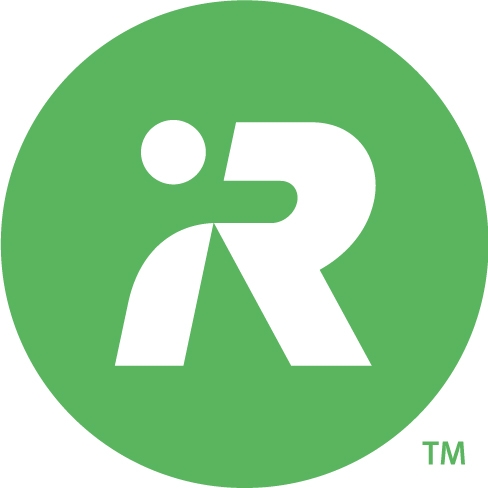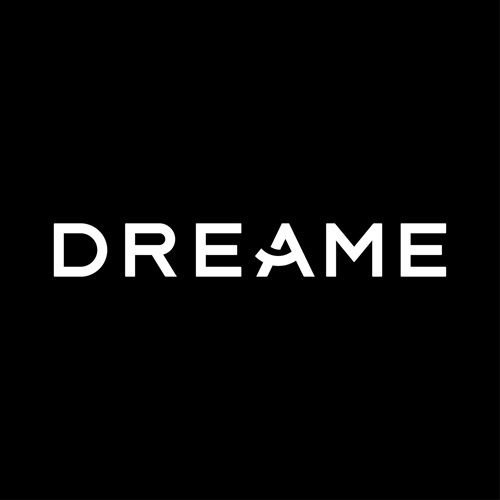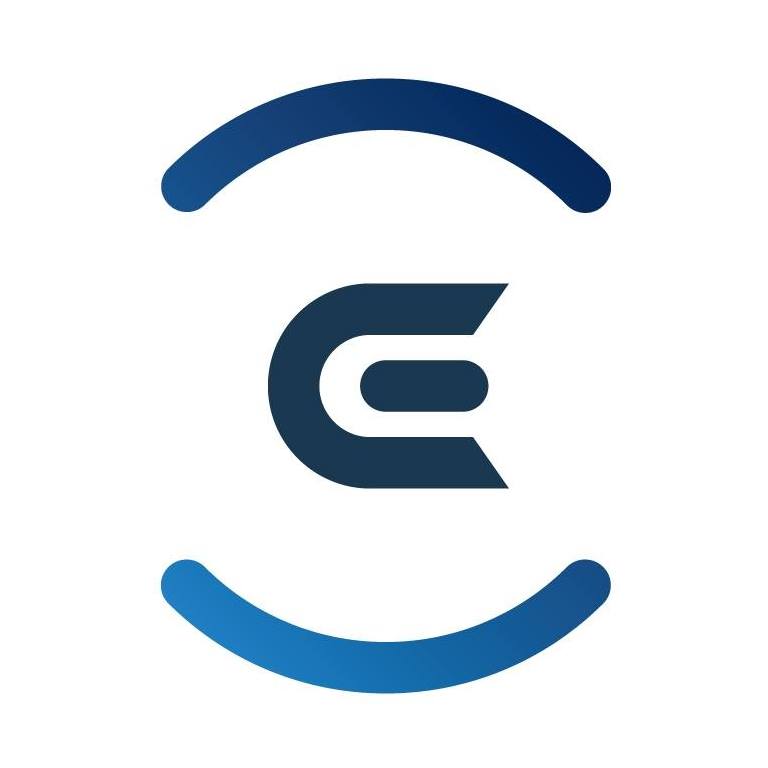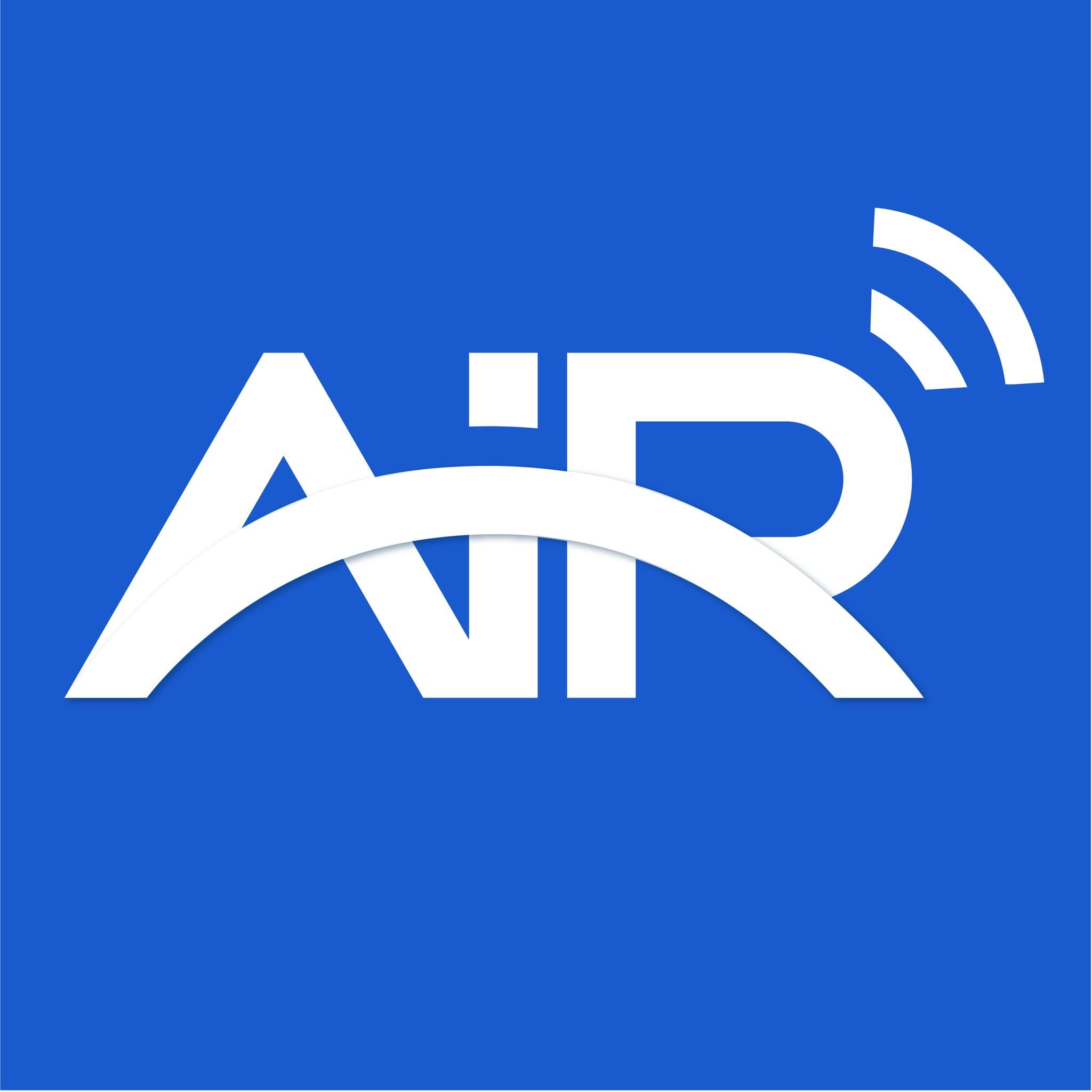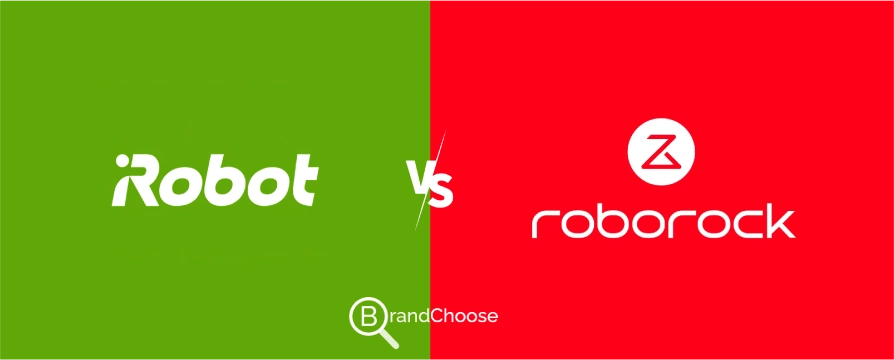
If you're shopping for a robot vacuum, you’re almost guaranteed to meet Roborock and iRobot — but picking between them means choosing two very different styles of automation.
iRobot, headquartered in Massachusetts, USA, was founded in 1990 by former MIT roboticists. Originally known for defense and exploration robots, iRobot launched the world’s first Roomba vacuum in 2002, and since then, it's become nearly synonymous with consumer robot cleaning in the U.S. market. Over 40 million units sold globally speak to Roomba’s mainstream appeal, heavy focus on vision-based AI, obstacle recognition, and its famous Clean Base® self-emptying dock system.
Roborock, founded in 2014 in Beijing, China, arrived much later but very aggressively. It started under Xiaomi’s ecosystem before breaking out as a standalone global brand. Roborock rapidly positioned itself as a tech-first innovator, emphasizing LiDAR-based navigation, hybrid vacuum-mop designs, high suction power, elaborate docking stations that automate virtually everything, and even experimental robotic arms.
From $300 entry-level models to advanced $1,800 flagship robots, both brands now cover nearly every corner of the market. Stay with us as we put them head-to-head.
Affordability
🟣 Roborock’s lineup offers impressive feature sets for the price across all tiers. The flagship S8 MaxV Ultra sits around $1,799 MSRP, often dipping closer to $1,300 during promotions, packing extreme suction, full mop care automation, and its RockDock® Ultra 8-in-1 dock. The mid-tiers Q8 Max+ hits the sweet spot at $399–$499, delivering LiDAR mapping, dual-roller brushes, and an auto-empty dock without the more advanced mop care. Even at entry level, the Q7 Max provides serious hardware like 4,200 Pa suction and mop functionality for $160–$199 — offering exceptional value for budget buyers.
🔵 iRobot’s pricing reflects its established brand reputation. The flagship Roomba Combo® j9+ retails around $1,399, with sale pricing often dipping to $799–1,199, bringing retractable mop pads, Dirt Detective™ AI, and dual-function Auto-Fill Dock. The mid-tier j7+ lands at about $599, focused entirely on vacuuming with Clean Base® self-emptying convenience. Entry-tier j7 offers most navigation features without the auto-empty dock for around $329.
🏆 Winner: Roborock — More features per dollar at every tier, especially with strong entry and mid-range offers.
Build Quality & Durability
The two brands take noticeably different routes when it comes to engineering philosophy and long-term durability, even though both deliver solid, well-built machines across their lineups.
🟣 When it comes to Roborock, precision hardware and intricate mechanical design do most of the talking. High-grade plastics, glossy shells, magnetic access panels, and those clever internal hair-cutting rollers all add up to a polished, user-friendly experience. Maintenance is also thoughtfully designed — most parts can be popped out without tools, which is always a win for your Saturday afternoon. Over the long haul, reliability holds up well overall, though it’s fair to expect occasional upkeep on smaller moving parts like side brushes or docking mechanisms.
🔵 Meanwhile, iRobot takes a more conservative-but — but rock-solid — approach to construction. The design leans heavily on rugged chassis builds and service-friendly layouts made for real-world daily abuse. Durable touches like dual rubber rollers and stainless-steel mop arms help these machines handle years of use without much drama. The warranty support also reflects this confidence, starting at one year for most models and stretching up to two years for the higher-end units. Extensive lab testing backs it all up, showing strong stain scrubbing and reliable vacuuming over time.
🏆 Winner: iRobot — Longer U.S. durability track record, stronger warranty, and highly proven reliability.
Products Variety
🟣 There’s no shortage of options on Roborock’s side of the fence. The lineup stretches wide — from the budget-friendly Q-series to the feature-loaded S-series, all the way up to experimental Saros models that feel like they came from the future. Whether you’re looking for something simple, something powerful, or something that practically cleans your house while you sip coffee, there’s a model waiting.
🔵 Over at iRobot, there’s actually quite a bit to choose from as well. While the j-series anchors most of the spotlight across its three main tiers, the full lineup includes several Combo models, legacy i- and e-series units still circulating, and plenty of variations depending on features, docks, or bundles. It’s a broader catalog than it first appears — but still organized in a way that won’t leave first-time buyers feeling overwhelmed.
🏆 Winner: Roborock (slightly) — Both offer strong lineups, but Roborock edges ahead with more innovation-packed models at every tier.
Smart Features, Innovation & Technologies
Let’s talk about what makes these bots feel truly futuristic.
🟣 These are the key smart systems behind Roborock’s lineup:
• PreciSense® LiDAR Navigation — laser-based real-time mapping with multi-floor support for precise room scanning and efficient cleaning routes. (All tiers)
• ReactiveAI® Obstacle Avoidance — combines AI-powered cameras and 3D structured light sensors to identify and avoid objects like cords, shoes, and pet waste. (Mid & flagship tiers)
• ReactiveAI® 3.0 + StarLight™ AI Processor — advanced object recognition engine capable of classifying dozens of obstacles in real-time, improving avoidance precision even in low-light conditions. (Flagship tiers)
• FlexiArm Design™ — side brush mechanically extends to sweep into corners and edges more thoroughly than standard fixed side brushes. (Flagship tiers)
• HyperForce® Suction Control — adjustable multi-level suction system delivering up to 22,000 Pa of power depending on model. (All tiers with varying power levels)
• Carpet Boost+ System™ — ultrasonic carpet detection automatically increases suction when carpet fibers are detected. (Mid & flagship tiers)
• VibraRise® 3.0 Sonic Mopping System — uses high-speed sonic scrubbing (up to 4,000 vibrations/min) while lifting mop pads to avoid wetting carpets. (Flagship tiers)
• OmniGrip™ Robotic Arm — first-in-market robotic arm for lifting and moving obstacles (e.g., power cords, small items) out of the vacuum’s path. (Saros Z70 only)
• App Control via Roborock App — real-time mapping, multi-floor plans, customized room cleaning, zone editing, live tracking, advanced scheduling, and cleaning history. (All tiers)
• Matter® Smart Home Integration — enables cross-platform smart home compatibility for Apple HomeKit, Alexa, Google, and others. (Flagship tiers, rolling out wider)
Beyond the smart tech, these are the hands-on perks Roborock includes:
• Dual Roller Brush System (DuoRoller Riser®) — two counter-rotating rollers improve debris pickup, especially on carpets. (Mid & flagship tiers)
• RockDock® Auto-Empty Docking Systems — from basic dustbin emptying to full wash, dry, water refill, and detergent injection, depending on model. (All tiers, functionality scales up)
• JawScrapers Anti-Tangle Comb — built into the brush housing to pull hair out of the roller without needing manual removal. (Mid & flagship tiers)
• Floating Brush Design — automatically adjusts to uneven floors for better contact and dirt pickup. (All tiers)
• Adjustable Water Flow for Mopping — manual sliders or app-based control let you regulate mop pad wetness depending on floor type. (All mop-equipped models)
• Modular Part Design — most brushes, filters, and tanks are easy to replace and pop in without tools. (All tiers)
• Washable Filters — HEPA-style E11 filters that can be rinsed and reused instead of thrown away. (All tiers)
Let’s see how iRobot keeps Roomba intelligent:
• Imprint® Smart Mapping — learns home layouts, allows users to label rooms, create cleaning zones, and customize schedules through app. (All tiers starting from i5)
• PrecisionVision Navigation™ — AI-powered camera obstacle detection identifying cords, socks, shoes, and pet messes for real-time avoidance. (Mid & flagship tiers)
• iRobot Genius™ Smart Features — personalized cleaning suggestions based on user habits, pet-shedding seasons, and historical usage data. (All tiers)
• Dirt Detect™ Technology — sensors identify heavily soiled areas and automatically increase cleaning intensity. (All tiers
• iRobot Home App — user-friendly interface for room editing, no-go zones, scheduling, voice assistant integration, and firmware updates. (All tiers)
• Voice Control Integration — works with Alexa, Google Assistant, Siri Shortcuts for voice-activated cleaning commands. (All tiers)
These non-digital features make Roomba practical day-to-day:
• Dual Multi-Surface Rubber Brushes — flexible, tangle-resistant rollers that conform to carpet and hard floor contours. (All tiers)
• Edge-Sweeping Brush — angled side brush cleans baseboards and corners effectively. (All tiers)
• Clean Base® Auto-Empty Dock — automatically empties vacuum dustbins into sealed bags, reducing maintenance. (All tiers with "+ model" variants)
• AutoWash™ Dock — latest flagship dock that washes and dries mop pads while handling auto-emptying functions. (Flagship Max 705 only)
• Auto-Adjust Cleaning Head — the vacuum head physically shifts height between hard floors and rugs. (All tiers)
• Removable Mop Pad Assembly — on Combo models, mop modules can be quickly detached and hand-washed. (Mop-equipped models)
• Color-Coded Maintenance Parts — yellow tabs indicate which parts need regular attention (e.g. brush, bin, filter). (All tiers)
🏆 Winner: It's a high-tech tie! — Roborock brings the tech muscle, iRobot brings the polish—and both nail smart features in their own way.
Motor & Cleaning Power
If you’ve seen me testing vacuums, you know I chase airflow like a scientist on a treasure hunt—and both Roborock and iRobot deliver some serious digging power.
🟣 First off, don’t let anyone tell you Roborock’s suction numbers are just marketing noise—they pack a punch. Even at the entry-level, models like the Q5 Pro bring solid suction with 5,500 Pa HyperForce®, which is impressive for affordable models and still more than many rivals offer at this tier. Stepping up to the mid-range, the Q Revo MaxV jumps to 7,000 Pa HyperForce®. Now, if you need serious oomph, the high-end S8 MaxV Ultra boasts 10,000 Pa HyperForce® suction. And if that’s not enough, the flagship Saros Z70 kicks it up to an insane 22,000 Pa—an absurd amount of suction designed for seriously grimy scenarios.
But suction alone isn't the whole story. These vacs come with the Dual Anti‑Tangle System, combing long hair out of brushes with a JawScrapers comb and tangle‑free side brush—huge bonus if you've got pets in the house.
For carpet dwellers, Roborock’s Carpet Boost+ System™ ups the game by detecting carpets with ultrasonic sensors and lifting suction by 99.5%. Oh, and the FlexiArm Design™ side brush? It mechanically reaches into corners, grabbing dirt that others miss.
🔵 On the iRobot side, the new Roomba Max 705 finally brings some serious suction to the party: 13,000 Pa “extreme power-lifting suction”—their strongest yet. That’s real muscle, especially when combined with anti-tangle Dual Rubber Brushes, which adjust to surfaces and resist hair wrap—perfect for pet homes.
There’s more—Carpet Boost helps bots detect rugs and step up suction automatically. Factor in Edge-Sweeping Brushes, and the vacuum leaves fewer crumbs behind.
Their mid-range options, like the Combo j7+ may not advertise Pa specs, but they combine respectable suction with smart navigation and mapping that keeps cleaning consistent across rooms. On the entry-level side, models like the Roomba Combo i5 rely heavily on Dirt Detect™ Technology, which uses acoustic sensors to boost suction automatically when extra debris is detected—smart for its class, though limited on raw suction numbers.
📌 Note: iRobot doesn’t publish flow‑rate stats, so we’re mostly relying on their suction claims and hands‑on sessions. Some pros say their rollers combat dirt as well as airflow does. Still, until we get airflow curves, it’s hard to compare apples to Roborock’s Pa-based data.
🏆 Winner: Roborock — Powerful suction and intelligent brush systems secure a decisive win.
Navigation & Mapping Technology
Mapping is where robot vacuums either feel like little geniuses or lost toddlers. Both Roborock and iRobot bring serious brainpower, but in slightly different flavors.
🟣 Roborock? At the entry-level, even models like the Q5 Pro are equipped with PreciSense® LiDAR Navigation, delivering accurate room mapping, quick path planning, and support for multi-floor maps. Moving into mid-range, the Q Revo MaxV steps things up by pairing LiDAR with structured light 3D mapping, helping the robot understand not just walls but also furniture height, depth, and soft obstacles. This adds another layer of precision when dodging things like pet beds or cables.
At the high end, the flagship S8 MaxV Ultra and the elite Saros Z70 take it into full-blown sci-fi territory with ReactiveAI™ 3.0 — combining LiDAR, dual cameras, 3D structured light, and AI-powered object recognition. The system identifies common household hazards like cords, shoes, and pet accidents while still mapping highly detailed 3D layouts for entire floors. The StarLight™ AI processor further refines object classification and decision-making.
What sets Roborock apart is how consistently they deliver high-level navigation across every class—even their budget models aren't stuck with random bump-and-go behavior like many competitors.
🔵 On iRobot’s side, entry-level models like the Roomba Combo i5 use basic mapping through Imprint® Smart Mapping, allowing users to label rooms and create simple cleaning zones—even without advanced cameras or lidar. It’s refreshingly user-friendly for this price range, but lacks depth sensing.
In the mid-range, models like the Roomba Combo j7+ add camera-based navigation with PrecisionVision Navigation™, allowing better recognition of obstacles like cords or pet waste while still building usable floor plans you can control via the app.
Their flagship Roomba Max 705 finally adopts lidar for the first time, combining it with cameras and AI object classification, creating highly detailed, multi-floor maps while using onboard processors for quicker map learning and real-time adjustments. iRobot claims these units build accurate maps about 7x faster than earlier generations.
🏆 Winner: Roborock (narrow win) — Slightly better mapping consistency, especially in cluttered or low-light environments.
Docking Station System
A docking station isn’t just a parking spot anymore — it’s where robot vacuums secretly handle the dirty work you don’t want to think about. Both brands have put serious engineering into these little home bases.
🟣 On Roborock's side, even at the entry-class, the Auto‑Empty Dock automatically sucks debris from the dustbin into a sealed bag—cutting maintenance to every few weeks. Moving into mid-range, the RockDock® Ultra adds full mop care: it automatically washes and dries mop pads, refills clean water, and heats the rack to prevent mildew.
At the flagship level, the Multifunctional Dock 4.0 adds several exclusive perks: detachable mop cloth mounts that release automatically when carpet is detected, 80 °C hot-water mop washing, auto-detergent dispensing, hot-air drying cycles, and automatic dirty-water draining. It also has a mirror‑surface finish, high-frequency dust collection in both vac‑and‑mop modes, 2.5‑hour fast charging, and even an intelligent dirt‑detection system that triggers auto re-wash on heavily soiled areas.
🔵 With iRobot, and in the entry-class, the Clean Base® Auto‑Empty Dock automatically bags debris. In mid-range, the Clean Base® remains, with some mop support on combo models—but still lacks full auto-wash or hot-dry capabilities.
Their flagship AutoWash™ Dock finally delivers full mop care: debris auto-emptying, mop washing and drying cycles, solution-tank refills, and a self‑cleaning cycle that ensures the dock surface stays tidy. It also uses an auto-retract mopping system that lifts the pad to avoid wetting carpets and includes SmartScrub agitation for deeper scrubbing.
🏆 Winner: Roborock — More automated, multi-functional, and innovative docking across multiple classes.
Obstacle Avoidance & Object Recognition
Avoiding obstacles isn’t just nice to have—it’s now one of the most defining technologies separating entry-level bots from true smart cleaners.
🟣 Roborock's entry models use purely lidar-based mapping without active obstacle detection — meaning they navigate smartly but aren’t great at spotting smaller floor hazards in real-time. For tidy homes, it works fine. Step into the mid-range, and things improve fast. They bring in ReactiveAI® Obstacle Avoidance, combining cameras and structured light sensors to actively identify and dodge everyday clutter. It can recognize common objects like shoes, cords, and even stray toys before bumping into them.
At the flagship end, they push object avoidance to an entirely different level. They use ReactiveAI® 3.0 paired with advanced 3D Structured Lighting and Dual Cameras for highly accurate object classification — identifying dozens of object types, including cables, scales, power strips, and more. And of course, the Saros Z70’s OmniGrip™ robotic arm takes it one notch higher by physically lifting obstacles out of its way — the first mainstream robot to do so.
🔵 On the American side, iRobot's entry models don’t offer real-time object recognition but rely instead on predefined maps and user-labeled no-go zones. It works fine for basic navigation but lacks true obstacle awareness. In mid-range, they introduce PrecisionVision Navigation™, combining front-facing cameras with onboard AI to visually identify and steer around hazards like pet waste, cords, socks, and shoes — a big selling point for pet owners who fear unpleasant accidents.
Finally, the flagship models take this even further by adding lidar and improved AI Processing for faster object detection and real-time classification of clutter. It learns over time, improving obstacle predictions with repeated use. iRobot still leans more toward AI-powered visual classification rather than structured light or multi-sensor fusion like Roborock.
🏆 Winner: Roborock — Broader object catalog and multi-sensor recognition give it the upper hand.
Battery Life & Coverage Area
🟣 At the entry level, Roborock units typically run on 5,200 mAh batteries, delivering up to 180 minutes and covering about 3,200 ft² per charge. Mid-tier models maintain similar capacity but squeeze out 200–220 minutes, cleaning up to 3,800 ft² thanks to smarter power management that balances suction and mapping loads. Flagships step up to 6,400 mAh, running over 220 minutes while covering as much as 4,300 ft² in one session. On top of that, Roborock integrates Smart Top-Up Charging, which calculates exactly how much extra charge is needed to finish the remaining area, reducing unnecessary downtime.
🔵 iRobot's Entry units typically pack smaller batteries delivering around 75–90 minutes of runtime with coverage up to 1,200 ft². Mid-range units improve to about 90–110 minutes, handling roughly 1,600 ft² through efficient pathing and mapping that avoids unnecessary overlap. At the high end, iRobot pushes to about 120–130 minutes, covering close to 1,900 ft² before returning to the dock. While iRobot trails Roborock in pure capacity, it makes up ground with strong Recharge & Resume logic and efficient room mapping that keeps cleaning cycles productive.
🏆 Winner: Roborock — Longer runtime and smarter recharge cycles deliver wider coverage per session.
Quick Buyer Match Guide
Go with Roborock if you are:
✔️ Cleaning larger homes that need longer battery life and full-featured docks
✔️ Someone who wants to own the world’s first robot vacuum with a working robotic arm
✔️ Looking for flagship-level tech and suction power even in mid-range models
✔️ Looking for full control over every detail, from suction strength to multi-floor cleaning zones
Choose iRobot if you prefer:
✔️ A proudly American brand with decades of robotics expertise behind it
✔️ A vacuum that quietly understands your habits and adapts to your home
✔️ Proven obstacle avoidance for messes and hair as a pet owner
✔️ Strong customer support and service options in the U.S.
Conclusion
Both Roborock and iRobot represent the very best in robotic vacuum technology — but their design philosophies diverge sharply. Roborock chases ultimate automation, with high suction, superior LiDAR, and industry-leading dock features that reduce manual interaction to nearly zero. iRobot, on the other hand, doubles down on object recognition, rock-solid stability, and adaptive room-by-room AI learning that works exceptionally well for pet owners and everyday clutter.
For buyers who want cutting-edge automation with maximum feature density, Roborock takes the lead. For those who prioritize dependable daily cleaning with minimal fuss — particularly in real-life messy households — iRobot remains a safe, polished bet. Either way, you're getting some of the best consumer robotics on the planet.



